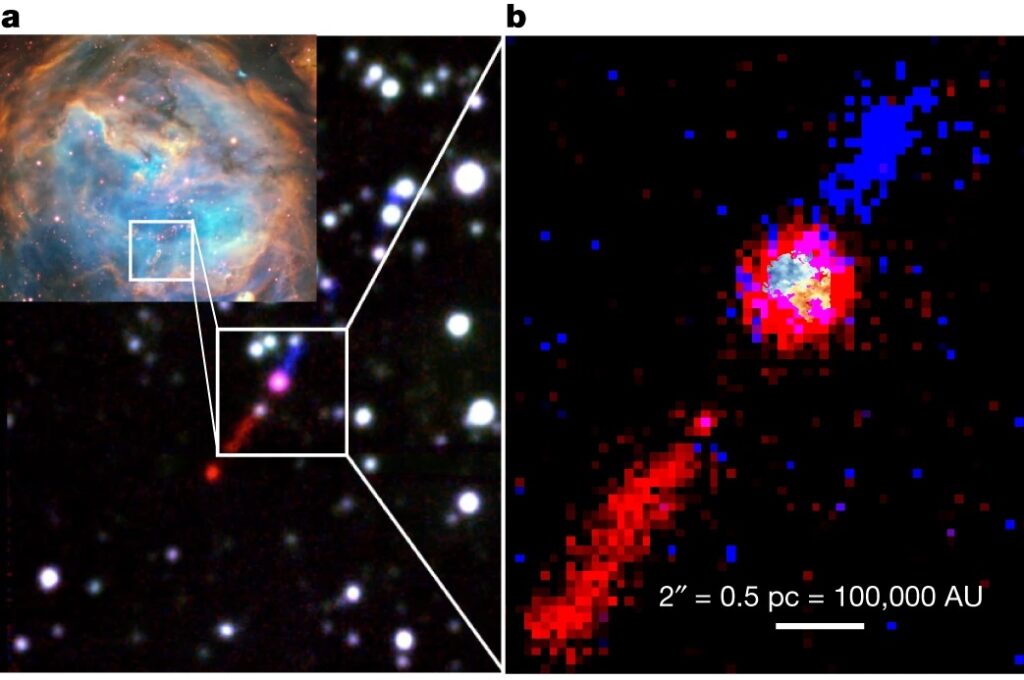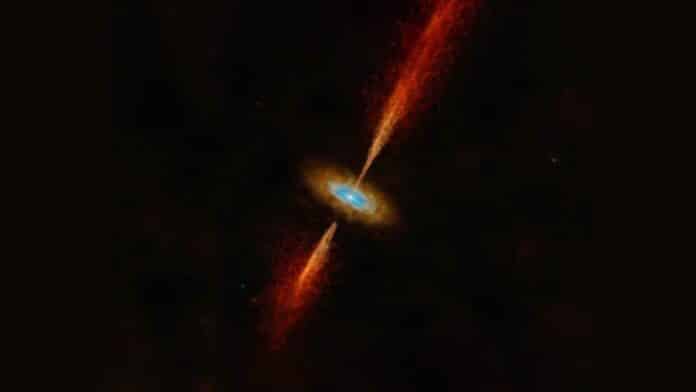Disk-mediated accretion is the standard model for star formation, and Keplerian accretion disks and related bipolar jets are mainly found in local, low-mass young stellar objects (YSOs). Rotating gaseous structures and Keplerian disks have recently been found near several massive systems, including several disk-jet systems. Every known MYSO system is entrenched in its natal material and is located in the Milky Way.
A new study reported the first detection of a rotating disc structure around a forming high-mass star outside of our Milky Way in another galaxy. The discovery was made using ALMA by an international team of astronomers led by Durham University and including astronomers at the UK Astronomy Technology Centre.
Astronomers observed the disc surrounding a young massive star in a stellar nursery called N180, located in a neighboring dwarf galaxy called the Large Magellanic Cloud. This is the most distant disc around a giant star ever directly seen, at 163,000 light years from Earth.
Scientists saw movements in the gas surrounding a young star in the Large Magellanic Cloud that aligned with an accretion disk known as Keplerian. This kind feeds star formation by allowing material to fall in.
Matter flattens into a revolving disc around the growing star as it is drawn towards it; it cannot fall straight onto the star. The disc rotates faster as it approaches the center, and this speed difference is the primary indicator for astronomers that an accretion disc is there.

Lead author of the study, Dr. Anna McLeod from the Centre for Extragalactic Astronomy, Durham University, said: “When I first saw evidence for a rotating structure in the ALMA data, I could not believe that we had detected the first extragalactic accretion disc; it was a special moment.”
“We know discs are vital to forming stars and planets in our galaxy, and here, for the first time, we’re seeing direct evidence for this in another galaxy.”
This system is optically observable, unlike similar circumstellar disks in the Milky Way, probably because its surroundings contain lower dust and metal. This gives astronomers a glimpse into the accretion mechanisms usually obscured by clouds of gas and dust.
Analysis of the disc suggests an inner Keplerian region transitioning to infalling material at larger distances from the central star. The star’s mass has been estimated to be about fifteen times that of the Sun.
Even though they have many of the same features as Milky Way discs, they also have some exciting variations.
The disk appears to be more stable against fragmentation due to the low metal concentration that is characteristic of the LMC.
The result increases the likelihood of discovering more of these systems using the Next Generation Very Large Array (ngVLA) and ALMA.
Journal Reference:
- McLeod, A.F., Klaassen, P.D., Reiter, M. et al. A probable Keplerian disk feeding an optically revealed massive young star. Nature (2023). DOI: 10.1038/s41586-023-06790-2
